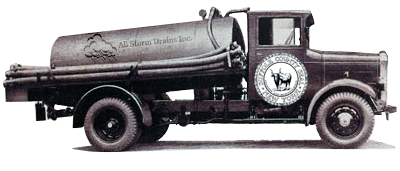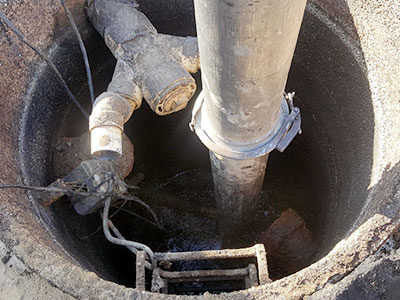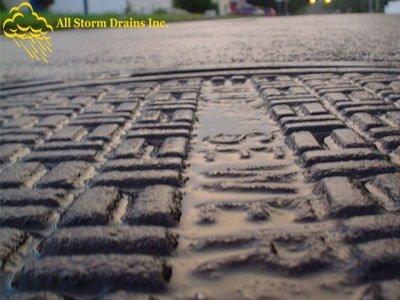Storm Drain Repair and Clog Prevention | All Storm Drains Inc. | AllStormDrains.com
Storm Drain Repair and Clog Prevention
While storm drain covers are designed to include grates that filter out large objects that can lead to clogging these drain systems are, unfortunately, not 100% foolproof and do require maintenance or even replacement in certain situations.
We encourage all our customers to take regular preventative steps that maintain the integrity of their storm drains. But if a storm drain does become damaged, it’s important for homeowners and property managers to fix it as soon as possible, especially before the rainy season begins. Backups and clogs can lead to expensive and dangerous flooding, and in certain circumstances, broken storm drains can even lead to water penetrating and damaging building foundations.
We encourage all our customers to take regular preventative steps that maintain the integrity of their storm drains. But if a storm drain does become damaged, it’s important for homeowners and property managers to fix it as soon as possible, especially before the rainy season begins. Backups and clogs can lead to expensive and dangerous flooding, and in certain circumstances, broken storm drains can even lead to water penetrating and damaging building foundations.
An ineffective storm drain can lead to flooded basements, un-passable street intersections, broken septic tanks and more. Here are some of the steps you can take now to prevent storm drain backups those resulting issues.
Rake leaves and sticks away from storm drains
Clearing away the debris that collects around storm drain covers is one of the best ways to prevent clogging. This is especially important when heavy rains are forecasted. Clearing a path along your street’s curb will also help ensure rain water can easily flow from the street into the public storm drain system.Never dump leaves or trash into storm drains
Do not rake or blow leaves or other yard waste into storm drains. While this may seem like an easy solution while doing yard work, this will lead to clogs over time. Instead, collect the waste in yard bags and leave them outside in your compost bins for pickup.Have the gutters cleaned in mid-Autumn
Your home’s gutters help direct rainwater away from the home. The buildup of leaves, sticks and debris that collect in gutters overtime can lead to flooding (and dangerous ice formations in colder climates). It’s best to clean out your gutters regularly. We recommend having your gutters cleared at least once a year, preferably in Autumn.
Consider buying a new drain cover
Depending on the type of drain you have (see below) you may be able to replace the cover with something more effective. If you’re not sure what you might need, contact us or talk to someone at your local hardware store for more information.Troubleshooting a Clogged Storm Drain
In order to fix a broken storm drain, the first step is to understand what kind of storm drain you have. Then, you’ll need to diagnose the root cause of the problem and determine if/how it can be repaired. If repair is impossible, a replacement will be necessary.
One of the most common storm drains is the French drain. Also called a weeping tile or rock drain, a French drain typically consists of gravel or rocks that filter water through a trench and into a perforated pipe. These are especially common along a building’s foundation. The first step in fixing a French drain typically involves finding the damaged section of the pipe.
A corrugated drain line is another popular type of storm drain, also called a corrugated HDPE pipe. The high-density polyethylene (HDPE) is a popular material for laying underground drains because it is lightweight, resistant to cracking and abrasion, and easy to work with.
Alternatively, a Polyvinyl Chloride (PVC) drain line may have been chosen for your property because it was cost-effective with water-tight strength.
One of the most common storm drains is the French drain. Also called a weeping tile or rock drain, a French drain typically consists of gravel or rocks that filter water through a trench and into a perforated pipe. These are especially common along a building’s foundation. The first step in fixing a French drain typically involves finding the damaged section of the pipe.
A corrugated drain line is another popular type of storm drain, also called a corrugated HDPE pipe. The high-density polyethylene (HDPE) is a popular material for laying underground drains because it is lightweight, resistant to cracking and abrasion, and easy to work with.
Alternatively, a Polyvinyl Chloride (PVC) drain line may have been chosen for your property because it was cost-effective with water-tight strength.
Determining Your Storm Drain’s Characteristics
Another crucial detail when fixing a storm drain is the pipe’s size, including both diameter and length. It’s also important to know if the line runs straight or if it has any angled bends or curves. Finally, be sure you have an idea of how to access the line. Is there a definitive access point built into the system?
These details will determine if a company like Pipe Spy can help fix your storm drain problems. To discuss your situation directly, feel free to contact the experts on our team. We’ll be happy to help answer your questions and to help you determine the best path forward.






Comments
Post a Comment